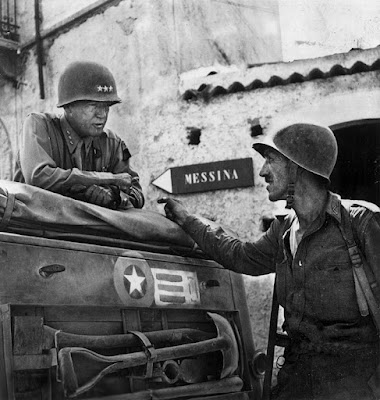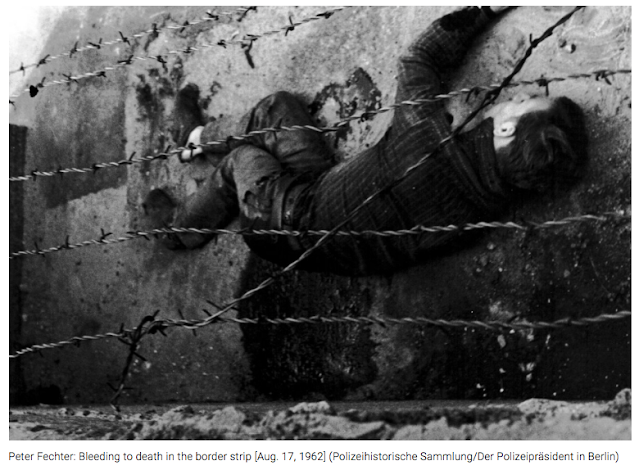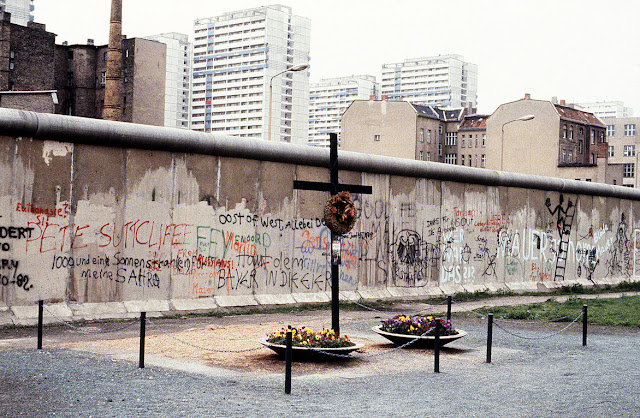On This Date In History
On August 17, 1943, U.S. General George S. Patton and his 7th Army arrive in Messina several hours before British Field Marshal Bernard L. Montgomery and his 8th Army, winning the unofficial “Race to Messina” and completing the Allied conquest of Sicily.
Born in San Gabriel, California, in 1885, Patton’s family had a long history of military service. After studying at West Point, he served as a tank officer in World War I, and these experiences, along with his extensive military study, led him to become an advocate of the crucial importance of the tank in future warfare. After the American entrance into World War II, Patton was placed in command of an important U.S. tank division and played a key role in the Allied invasion of French North Africa in 1942. In 1943, Patton led the U.S. 7th Army in its assault on Sicily and won fame for out-commanding Montgomery during their pincer movement against Messina.
Although Patton was one of the ablest American commanders in World War II, he was also one of the most controversial. He presented himself as a modern-day cavalryman, designed his own uniform, and was known to make eccentric claims of his direct descent from great military leaders of the past through reincarnation. During the Sicilian campaign, Patton generated considerable controversy when he accused a hospitalized U.S. soldier suffering from battle fatigue of cowardice and then personally struck him across the face. The famously profane general was forced to issue a public apology and was reprimanded by General Dwight Eisenhower.
However, when it was time for the invasion of Western Europe, Eisenhower could find no general as formidable as Patton, and the general was again granted an important military post. In 1944, Patton commanded the U.S. 3rd Army in the invasion of France, and in December of that year his expertise in military movement and tank warfare helped crush the German counteroffensive in the Ardennes.
During one of his many successful campaigns, General Patton was said to have declared, “Compared to war, all other forms of human endeavor shrink to insignificance.” On December 21, 1945, he died in a hospital in Germany from injuries sustained in an automobile accident near Mannheim.
On August 17, 1962, East German guards gun down a young man, 18 year old Peter Fechter, trying to escape across the Berlin Wall into West Berlin and leave him to bleed to death. It was one of the ugliest incidents to take place at one of the ugliest symbols of the Cold War.
The 1962 incident occurred almost a year to the day that construction began on the Berlin Wall. In August 1961, East Berlin authorities began stringing barbed wire across the boundary between East and West Berlin. In just a matter of days, a concrete block wall was under construction, complete with guard towers. In the months that followed, more barbed wire, machine guns, searchlights, guard posts, dogs, mines, and concrete barriers were set up, completely separating the two halves of the city. American officials condemned the communist action, but did nothing to halt construction of the wall.
On August 17, 1962, two young men from East Berlin attempted to scramble to freedom across the wall. One was successful in climbing the last barbed wire fence and, though suffering numerous cuts, made it safely to West Berlin. While horrified West German guards watched, the second young man, Fechter, was shot by machine guns on the East Berlin side. He fell but managed to stand up again, reach the wall, and begin to climb over. More shots rang out. The young man was hit in the back, screamed, and fell backwards off of the wall. For nearly an hour, he lay bleeding to death and crying for help. West German guards threw bandages to the man, and an angry crowd of West Berlin citizens screamed at the East German security men who seemed content to let the young man die. He finally did die, and East German guards scurried to where he lay and removed his body.
During the history of the Berlin Wall (1961 to 1989), nearly 80 people were killed trying to cross from East to West Berlin. East German officials always claimed that the wall was erected to protect the communist regime from the pernicious influences of Western capitalism and culture. In the nearly 30 years that the wall existed, however, no one was ever shot trying to enter East Berlin.
In March 1997, seven years after the reunification of Germany and 35 years after Fechter's death, two former East German guards, Rolf Friedrich and Erich Schreiber, faced manslaughter charges for Fechter's death. Both admitted to the shooting after an intense investigation. They were both convicted and sentenced to 20 and 21 months' imprisonment on probation. Due to a lack of conclusive evidence, the court was unable to determine which of three gunmen (one of whom had already died) had fired the fatal bullet. After pleading guilty to the crime, during sentencing, both guards apologized for killing Fechter, saying that if they could take it back, they would, and that they were honestly remorseful for their actions.










No comments:
Post a Comment